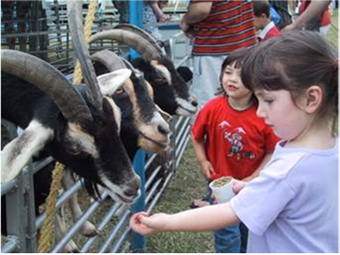Contact with Animals in Public Settings

Contact with animals in public settings (e.g., fairs, educational farms, petting zoos, schools) provides opportunities for entertainment and education. There are many wonderful benefits of human-animal contact. However, it is important to know that animals sometimes carry germs that could make people sick—even animals that look clean and healthy can still carry these harmful germs. Many outbreaks of illnesses spread between animals and people have been documented. These outbreaks have substantial medical, public health, legal, and economic effects.
State public health veterinarians are the local and state professionals who regularly consult with physicians, emergency rooms, legislators, local officials, schools, health departments, and the general public on preventing and controlling diseases that people can get from animals and animal products. CDC works closely with the National Association of State Public Health Veterinarians (NASPHV). NASPHV, in partnership with CDC and others, collaborate on a variety of guidance and recommendations related to the prevention and control of zoonoses.
The Compendium of Measures to Prevent Diseases Associated with Animals in Public Settings provides standardized recommendations for use by public health officials, veterinarians, animal venue operators, animal exhibitors, and others concerned with disease control and with minimizing risks associated with animals in public settings. To help prevent zoonotic diseases associated with animals in public settings, a toolkit of selected resources are available. This toolkit contains examples of regulations on animal exhibitions, printable posters with messages on how to stay safe while enjoying animals, and a check list of petting zoo best practices.
- Page last reviewed: March 15, 2017
- Page last updated: March 15, 2017
- Content source:


 ShareCompartir
ShareCompartir